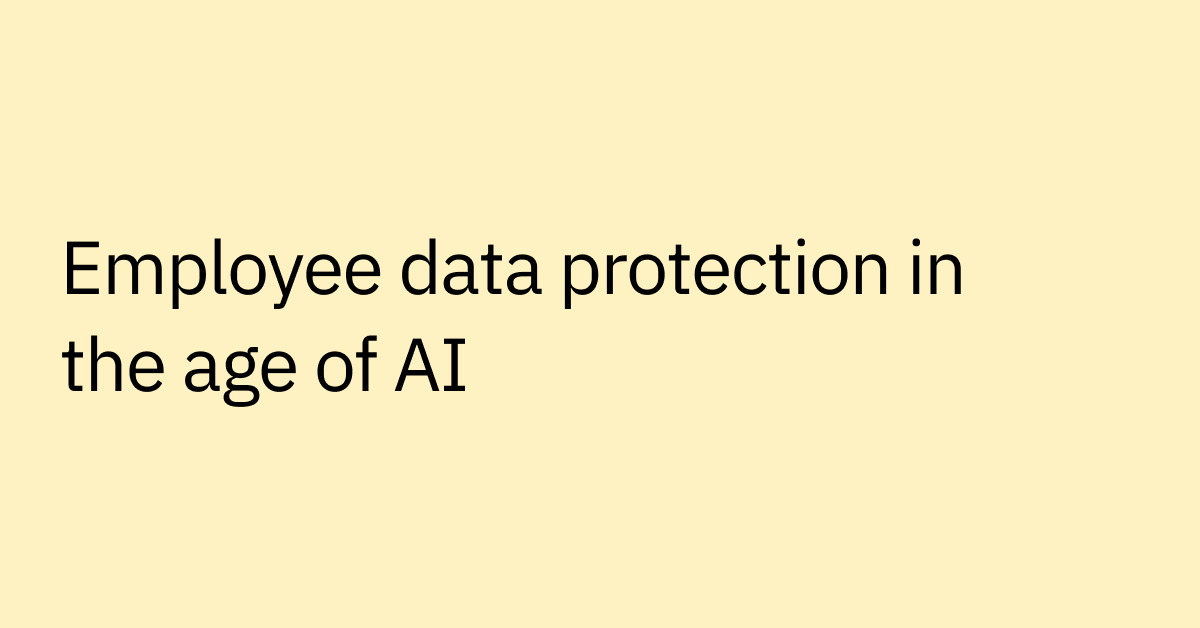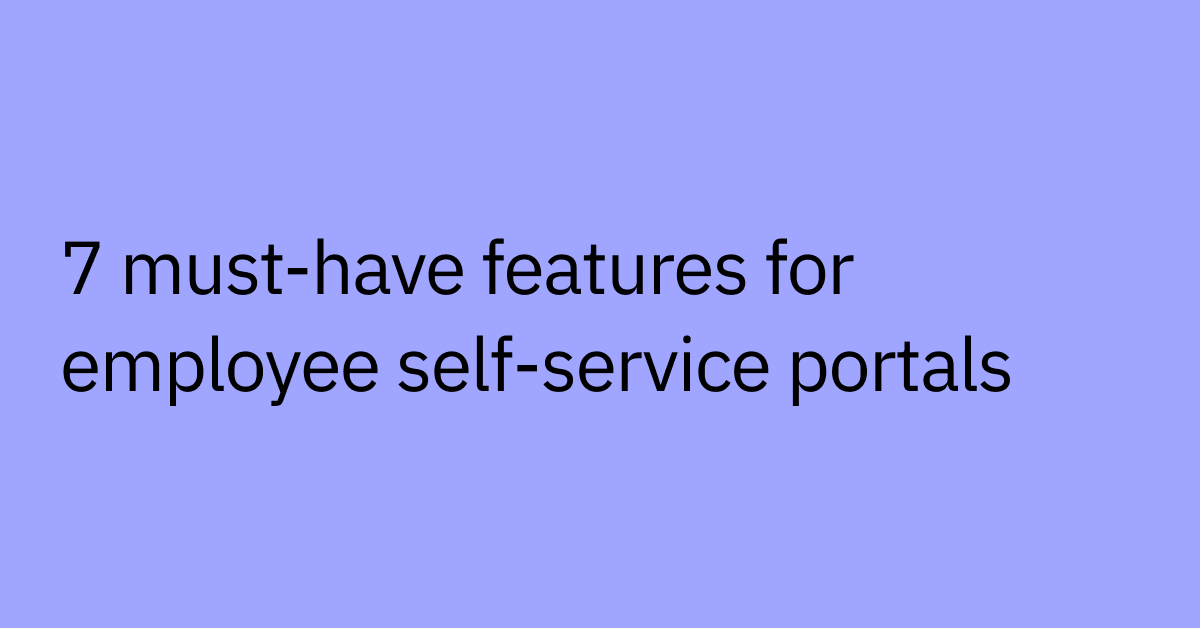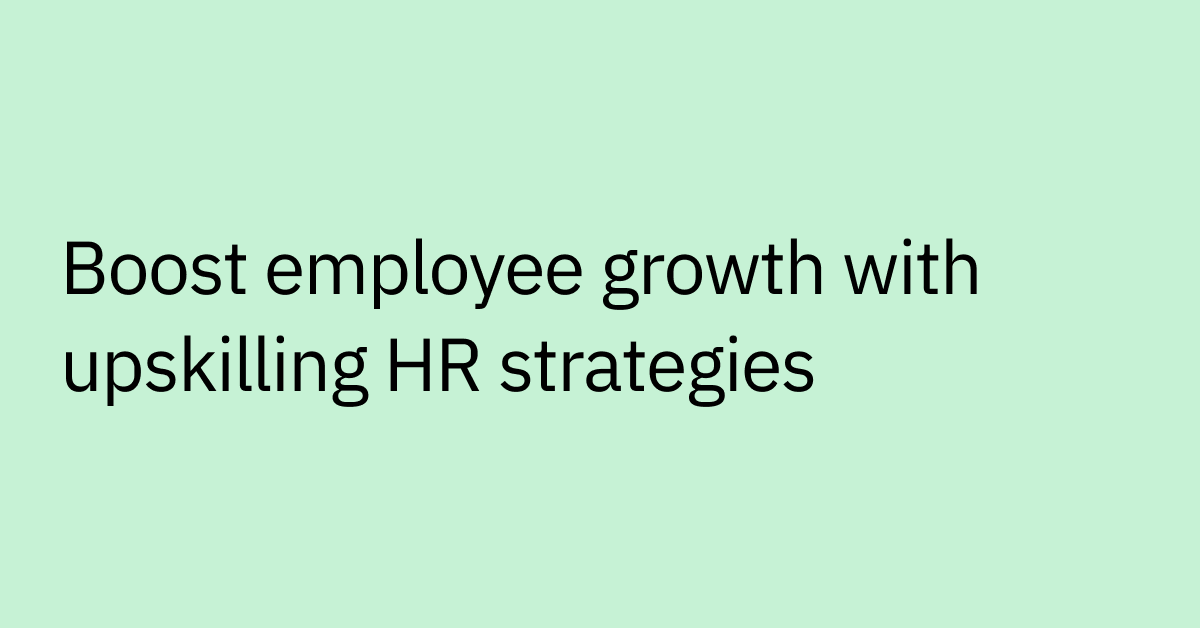Table of contents
Highlights
- Leading enterprises are transforming HR with AI and automation: Companies are cutting ticket volumes, streamlining onboarding, and delivering faster, more personalized employee support.
- Using AI for operational wins directly fuels HR’s bigger priorities—engagement, retention, and culture
- Case studies show measurable results across industries: Johnson Controls freed HR professionals for strategic work, Ciena built a 24/7 self-service model, Databricks scaled support in hypergrowth, and loanDepot reimagined onboarding and communications.
- An AI innovation platform creates a unified employee experience: By centralizing support and integrating across systems, enterprises can deliver instant, scalable help for any use case or department.
It’s a familiar picture at many enterprises: HR teams buried under rising ticket volumes, systems scattered across multiple platforms, and hybrid workforces expecting instant answers from wherever they’re working. At the same time, leaders are asking HR to cut costs, improve engagement, and retain top talent.
HR leaders are under pressure not just to deliver efficiency, but to shape an employee experience that keeps people engaged and reduces attrition too.
But digital HR transformation at an enterprise level is easier said than done. Integrating legacy systems, managing global change, and meeting compliance standards often slow initiatives to a crawl. That’s why many digital efforts stall before they ever deliver real impact.
AI is shifting that reality. Instead of just digitizing old processes, leading enterprises are rethinking HR altogether with AI. They’re leveraging today’s smart, AI-driven systems to automate routine requests, deliver consumer-grade support right inside Slack and Teams, and turn scattered data into insights that drive strategy.
These case studies spotlight real-world success stories of companies successfully transforming HR with AI. Each one shows how reimagining HR services with intelligent automation can deliver measurable ROI and a better experience for your teams.
Real-world case studies of HR digital transformation
Across industries, HR leaders are running into the same issues: overwhelmed teams, slow processes, and employees who need answers fast.
These four case studies show how enterprises are transforming HR processes with the right tools and strategies, and more importantly, how these changes can help to drive retention, engagement, and faster time-to-productivity:
1. Johnson Controls frees up HR teams to focus on strategic initiatives
Johnson Controls, a global leader in smart building solutions, had a big problem: Its HR team was overwhelmed with routine requests. Employees needed help with:
- Onboarding steps and system access
- Policy clarifications
- Payroll and benefits inquiries
Answering these questions consumed so much time, leaving HR professionals with minimal bandwidth for higher-value work. Instead of focusing on workforce planning or culture, HR was stuck in administrative mode, leading Johnson Controls to reimagine employee support with AI.
The company introduced an agentic AI assistant, which they named Omni, to automatically answer common HR questions. To guide the rollout, Johnson Controls assessed its AI readiness and mapped a phased adoption roadmap. They started with high-volume but simple tasks to score quick wins and build trust.
Optimizing HR operations creates company-wide value
Embedding Omni directly into Slack meant employees didn’t have to jump between portals or log into separate HR solutions. Instead of opening one app to reset a password and another to check policy details, they could simply message Omni in the same channel they already used for daily work. This eliminated “tool fatigue,” drove immediate adoption, and created lasting buy-in.
Over 100,000 Johnson Controls employees worldwide now go to Omni for all HR-related questions, cutting call volume by 30% to 40%.
With routine inquiries handled, HR had the bandwidth to focus on higher-impact priorities—driving retention programs, accelerating onboarding to productivity, and supporting leaders on workforce strategy
2. Ciena turns global HR bottlenecks into a 24/7 self-service experience
As a global leader in networking systems and software, Ciena faced mounting challenges as its workforce expanded across regions. Employees often hit support bottlenecks that left them waiting too long for answers to routine HR questions or approvals.
The fragmented support model spanned different systems, leaving employees bouncing between tools and teams for a poor employee support experience. HR leaders knew this friction wasn’t just operational—it could decrease engagement and won't scale either.
They needed a new approach that gave employees fast, consistent answers while reducing the load on HR staff.
Self-service support reduces employee wait time
Ciena introduced Navi, an agentic AI assistant, directly into Microsoft Teams as the single entry point for all workplace support. Instead of logging into Workday for one task, ServiceNow for another, and separate portals for IT and finance, employees could self-serve with Navi in their collaboration hub and get what they needed instantly.
By integrating with HR, IT, legal, and facilities systems, Navi unified workflows across the business. Still, implementation wasn’t without challenges.
Employees were used to siloed systems, and some doubted AI’s reliability. To tear down these roadblocks, Ciena rolled out a robust change management program—complete with upskilling sessions, continuous learning opportunities, and leaders modeling how to use Navi in everyday work.
This change management investment was key for HR—helping build trust in AI, ensure adoption, and support an inclusive employee experience across regions.
And payoff came quickly: approval times dropped, employees found answers faster, and HR reclaimed time for strategic initiatives—all while employees got the seamless, 24/7 support they expected.
See how Ciena pulled it off—and how your business can do the same.
3. Databricks scales HR support in a hypergrowth environment
Databricks, a fast-growing data and AI company, faced a major employee support challenge as it scaled. When the company doubled in size, its HR team couldn’t keep up with support requests flooding in from new hires and existing employees. Routine questions about onboarding, software access, or policies bogged down HR professionals, keeping them in reactive mode.
Automation shifts HR from reactive to proactive
To relieve the pressure, Databricks deployed R2DB, its AI Assistant, as an always-available support channel in Slack. At first, adoption lagged: The net promoter score (NPS) was only 30, with ticket deflection under 10%. Employees just didn’t see enough value yet.
Instead of giving up, Databricks expanded R2DB to cover more workflows and used Slack to educate employees directly within their flow of work. They also fine-tuned processes to balance speed with quality. The results were dramatic: adoption soared, NPS jumped to 70, and ticket deflection hit 73%.
But scaling during hypergrowth came with another challenge: maintaining consistent, secure support across more than 75 tools.
Databricks solved this by deeply integrating R2DB into Slack, email, ITSM, and HR systems. Later, they extended its capabilities with AI/BI Genie from the Moveworks Marketplace so that employees could access data-driven insights in the same agentic interface, speeding up informed decision-making.
The payoff was substantial. By streamlining support and cutting repetitive requests, Databricks saved an estimated $1.5 million annually in hiring costs, while giving employees faster, more reliable help.
4. loanDepot: Reimagining onboarding and communications
As one of the nation’s leading nonbank mortgage lenders, loanDepot faced a challenge that’s familiar to many large organizations. Employees struggled with delayed responses that slowed productivity, fragmented HR systems that left them guessing where to find help, with email communications that ended up lost in the shuffle.
These inefficiencies weren’t just frustrating—they risked engagement at critical moments like onboarding and offboarding. Average ticket resolution times often stretched on, while engagement with company-wide emails sat in the low teens.
Automating onboarding sets employees up for success
To solve these pain points, loanDepot introduced ElleDee, an AI-powered assistant it deployed right inside Microsoft Teams. Instead of chasing down IT approvals or digging through HR portals, new hires could message ElleDee for access, answers, and support within minutes. Approvals that once took days started taking less than five minutes.
This seamless support not only accelerated productivity but also boosted engagement and retention by giving employees confidence in their new workplace.
“Having a single place for new hires to get help relieves a massive burden for my team. By introducing ElleDee directly in Slack during onboarding, we make sure that people know where to get help, now and in the future. Over time, just that one change has an enormous compounding impact on what IT has time to do.”
— Donald Small, Director of IT Service Management, loanDepot
Streamlining internal communications keeps everyone on the same page
Beyond onboarding, loanDepot tackled the challenge of fragmented communications with the same strategy. Instead of flooding inboxes with generic emails, the company used ElleDee deliver personalized updates right there in Microsoft Teams. Employees got the news they needed in the tool they already used daily, and they could ask follow-up questions instantly in the same conversation.
The results were striking. Engagement with AI-powered comms far outpaced email, with over half of employees actively interacting with bot-delivered updates compared to email’s low-teens average.
“Moveworks for Employee Comms is a huge win. The difference in engagement—when compared to email—is astounding,” said Small.
Change management also played a critical role. loanDepot and Moveworks worked together to set clear expectations, train staff, and send proactive in-app comms to new hires and hybrid workers. This careful rollout drove rapid adoption, with 90% of employees rating ElleDee helpful within their very first week.
Discover how loanDepot automated onboarding and transformed employee communications with ElleDee.
Why success stories matter: Key lessons for HR leaders
Seeing how peers like Johnson Controls, Ciena, Databricks, and loanDepot succeeded with AI can spark ideas for your own HR transformation journey.
These real-world examples show what’s possible, moving beyond theory to deliver tangible results, like faster support, lower costs, and happier employees. They also build confidence to get buy-in from stakeholders, proving AI can scale and deliver ROI.
These case studies also showcase a few effective strategies that you can apply in your own transformation process:
- Focus on high-impact workflows first: Start with repetitive tasks like onboarding, approvals, or policy questions to show quick value.
- Integrate across systems: Make AI fit into tools like Teams or Slack, so it feels natural to employees.
- Prioritize employee experience: Deliver fast, personalized, and accessible HR services to boost satisfaction and overall well-being.
- Measure ROI clearly: Track metrics like ticket deflection or time savings to build momentum.
- Invest in adoption: Use training programs and clear communication to help employees embrace AI, like Ciena’s upskilling programs.
Explore more customer success stories to see how leading enterprises are transforming HR with AI and automation.
The future of HR transformation starts with an enterprise-grade AI partner
The stories prove that HR transformation is no longer theoretical. Enterprises are already using AI and automation to cut ticket volume, reduce wait times, and accelerate onboarding, freeing HR teams to focus on initiatives that move the business forward.
The lesson is clear: when you prioritize speed, accessibility, and personalization, transformation delivers measurable ROI and a better employee experience.
That’s exactly what Moveworks makes possible. Our enterprise-grade AI platform unifies fragmented systems, automates routine HR workflows, and delivers real-time, personalized support at scale. By removing the noise of repetitive requests, Moveworks empowers HR to take on its most strategic role yet: shaping culture, driving engagement, and guiding change.
And transformation doesn’t stop at HR. With Moveworks, you can extend the same AI-powered support across IT, finance, facilities, legal, and beyond—creating a single, unified employee experience that makes work easier for everyone.
It’s time to reimagine what HR can be. Discover how Moveworks AI for HR can help you transform employee support and prepare for the future of work.
Frequently Asked Questions
Start by mapping your most frequent and time-consuming support requests, then target those for automation. Quick wins, like onboarding, payroll inquiries, or policy access, build momentum and confidence for broader transformation.
Track metrics such as ticket deflection, average resolution time, employee satisfaction (CSAT or NPS), and retention impact. Clear, quantifiable results help secure ongoing investment and validate success.
Enterprises often struggle with fragmented systems, low employee adoption, and resistance to change. Overcoming these requires strong change management, seamless integration with existing workflows, and a focus on employee experience.
AI enables instant, personalized support at scale. It automates repetitive tasks, surfaces knowledge proactively, and unifies access across systems, freeing HR teams to focus on high-value, strategic work.
IT plays a critical role in integrating AI into existing platforms, maintaining security and compliance, and collaborating with HR to ensure systems work together. A close HR–IT partnership is essential for success.



